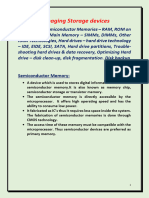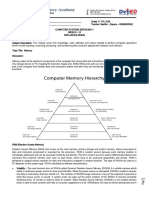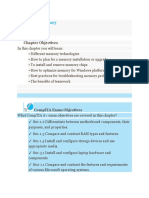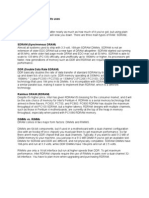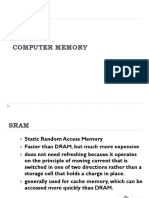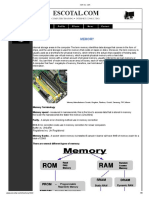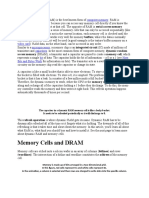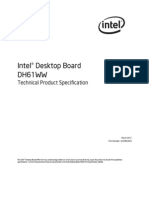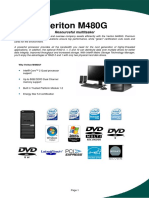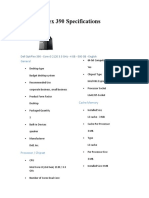0% found this document useful (0 votes)
42 views7 pagesM-03 Memory
The document provides an overview of computer memory types, including volatile (RAM) and nonvolatile (ROM) memory, detailing their functions and characteristics. It discusses various types of RAM (like DRAM, SRAM, and DDR variants) and ROM (such as PROM, EPROM, and EEPROM), along with their applications and performance features. Additionally, it covers memory modules, DIMM technologies, and important considerations for installation and compatibility.
Uploaded by
chamindumallawaarachchiCopyright
© © All Rights Reserved
We take content rights seriously. If you suspect this is your content, claim it here.
Available Formats
Download as PDF, TXT or read online on Scribd
0% found this document useful (0 votes)
42 views7 pagesM-03 Memory
The document provides an overview of computer memory types, including volatile (RAM) and nonvolatile (ROM) memory, detailing their functions and characteristics. It discusses various types of RAM (like DRAM, SRAM, and DDR variants) and ROM (such as PROM, EPROM, and EEPROM), along with their applications and performance features. Additionally, it covers memory modules, DIMM technologies, and important considerations for installation and compatibility.
Uploaded by
chamindumallawaarachchiCopyright
© © All Rights Reserved
We take content rights seriously. If you suspect this is your content, claim it here.
Available Formats
Download as PDF, TXT or read online on Scribd
/ 7
